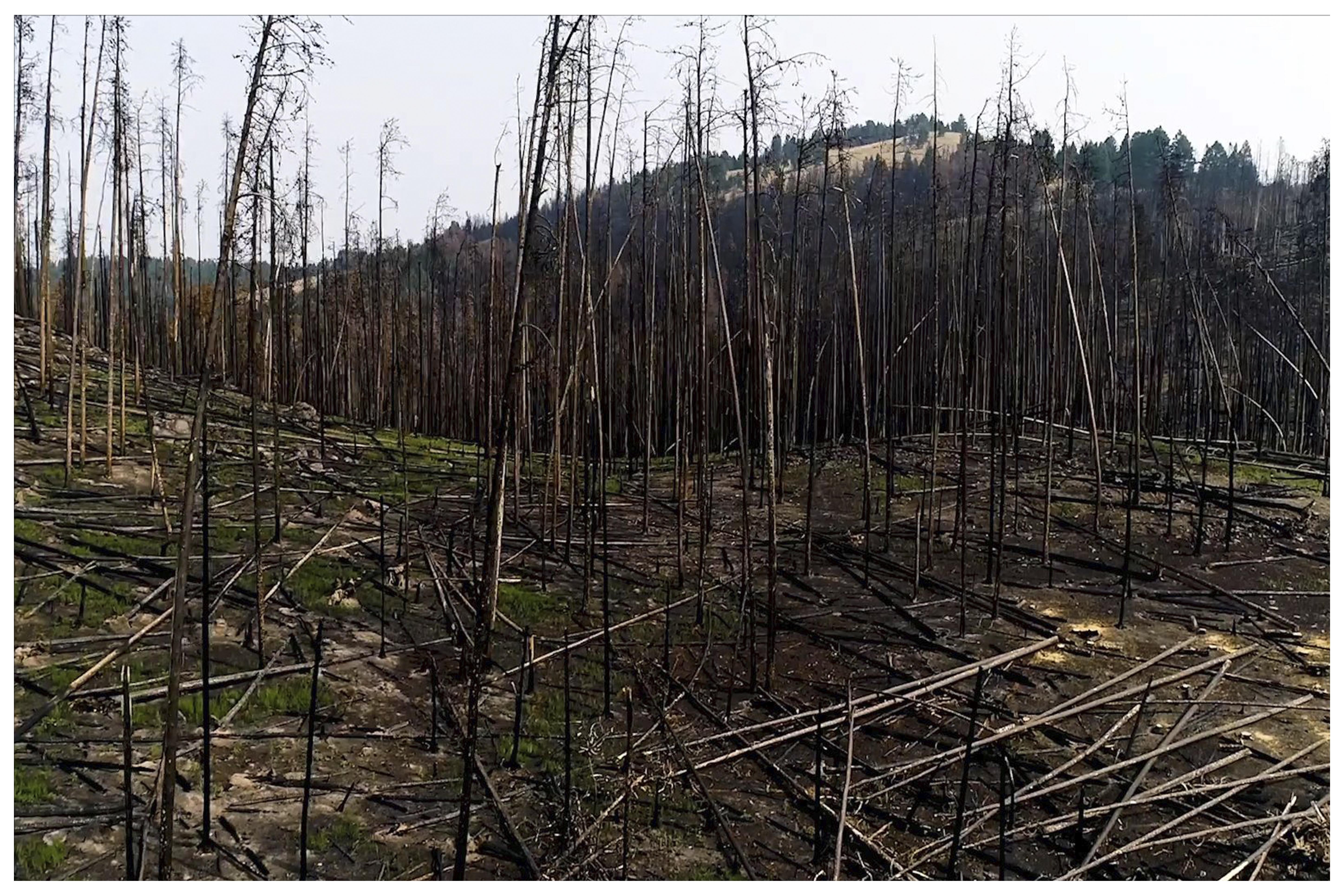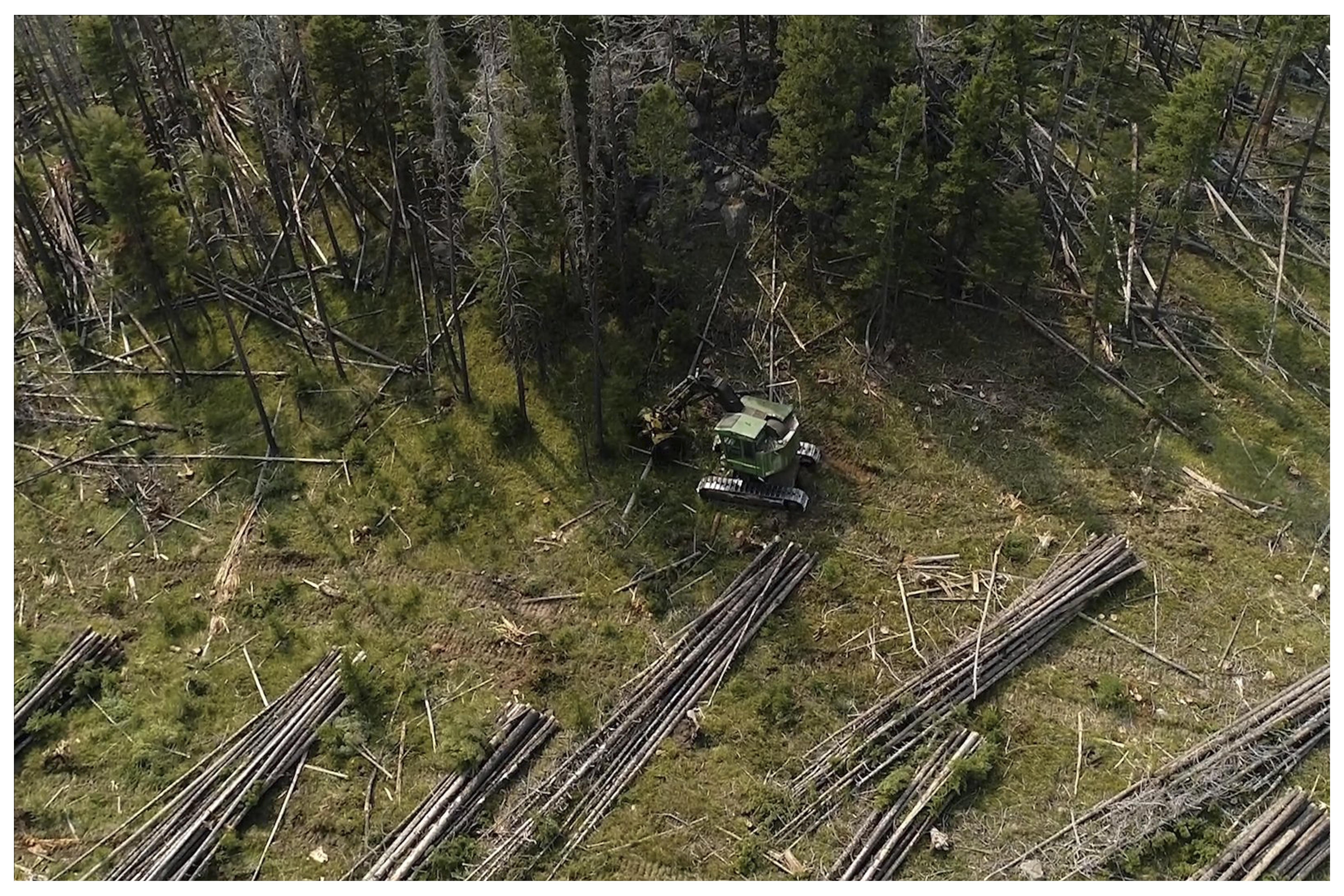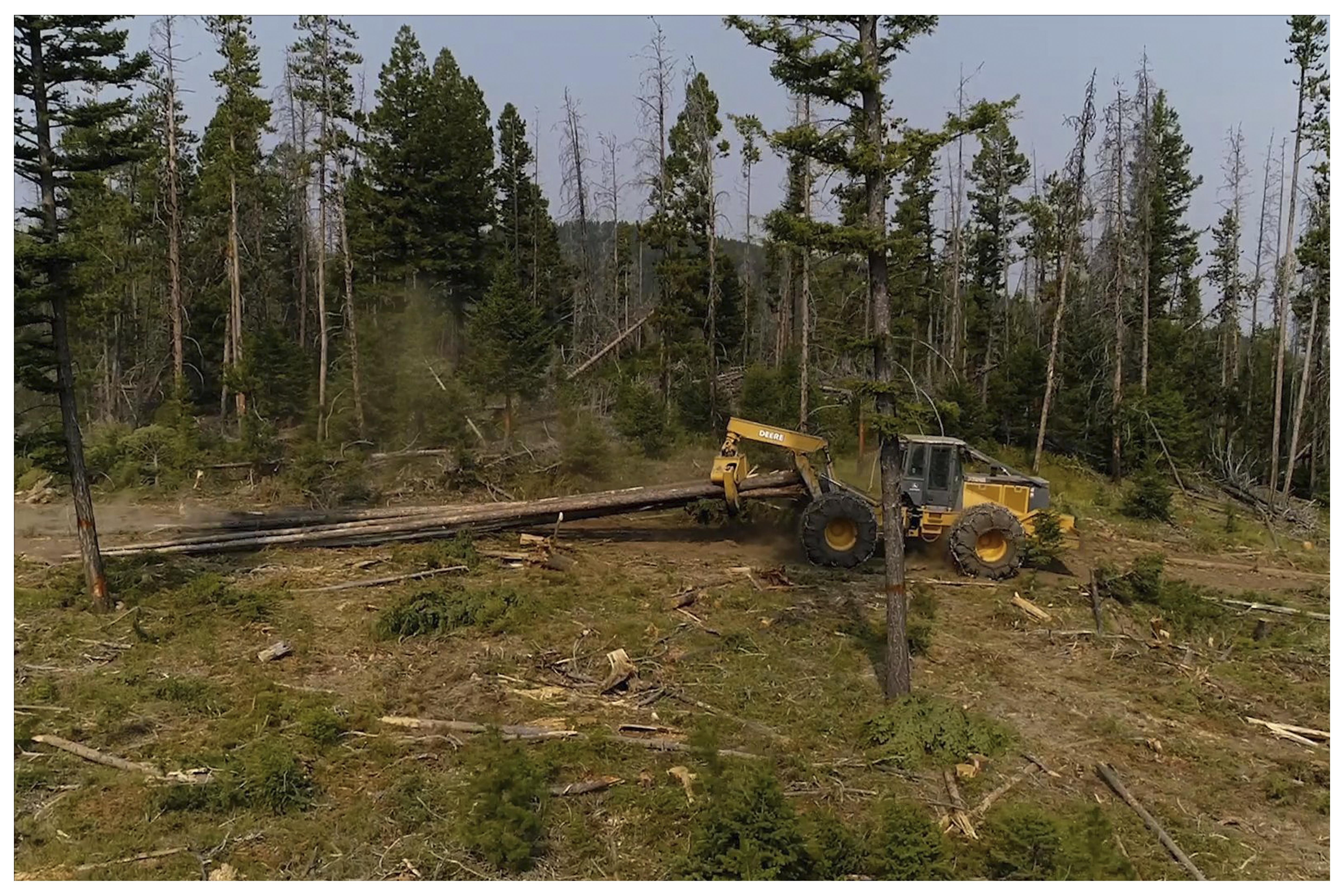In March 2020, Marks Lumber entered into an important public-private partnership with the U.S. Forest Service and the Montana Department of Natural Resources and Conservation (DNRC) – one that will preserve the safety and enjoyment of the Brooklyn Bridge area just outside Helena.

Located south of Helena near the town of Unionville is a wildland-urban interface known as the Brooklyn Bridge area. Owned by the U.S. Forest Service as part of the Helena-Lewis and Clark National Forest, this area is known for its convenient, multi-use recreation opportunities that provide a bit more seclusion than the nearby Mount Helena and Mount Ascension trailheads. While its proximity to Helena gives the public quick access to this beautiful local forest, it also poses a severe threat to the surrounding communities as it was recently identified by the Forest Service as an area of “high wildfire risk.”
Because of this, the Forest Service and the DNRC developed an urgent wildfire treatment plan that included thinning out the high quantity of dead, beetle-killed trees, marking approximately 58% of the timber to be removed.

Partnering Toward Purpose
In order to execute this necessary treatment plan, the federal and state agencies used the Good Neighbor Authority (GNA) to aid in the formation of this crucial partnership. According to the Forest Service, the GNA helps “add capacity to the federal agency to increase the amount of work collectively accomplished on federal ground, while maintaining program income within Montana to help local communities.”
While this partnership created the capacity needed to begin treatment of the area, the high volume of poor-quality fiber makes this an economically challenging project. However, Marks Lumber proudly joined the program to protect the greater Helena community from wildfire risk through the use of proper fire mitigation and forest restoration techniques.

Setting The Plan in Motion
So, in March of 2020, Marks Lumber began plans to restore the area using Montana’s Best Management Practices and the prescription developed by the Montana DNRC and the U.S. Forest Service. Further rules were put into place to ensure the protection of the land and abundant wildlife, including the many elk that frequented the logging site. These rules included:
- A limited operating period in order to provide minimal elk disturbance.
- Ceasing of all operations during the first two weeks of hunting season.
- The removal of non-merchantable materials such as wood-fiber that will go to pulp or be used for firewood.
- Ensuring that approximately 5-15 tons per acre of material is scattered throughout the landscape to rot.
Much of the key reclamation work will come at the end of the project. All skidder trails must be obliterated, contoured (if necessary), and reseeded to allow nature to quickly reclaim the area. Additionally, all new logging roads built for the project will be reclaimed the same way. The road that existed before the project will not be completely obliterated. From the locked gate at the head of Travis Creek, about 2 miles of road will have long term erosion control installed and will then be reseeded.
The next approximately 1.3 miles will be reclaimed as a 2’ wide meandering hiking trail, with all ground around the trail recontoured and reseeded. This reclamation will provide great wildlife habitat and recreation opportunities; so let’s look at the other key objective of the Brooklyn Bridge project: complete fuel mitigation to improve fire safety.

Specifics of Removal
Most of the logs marked for removal were dead, beetle-killed pine, with the other 42% being predominantly a mix of standing Ponderosa pine, Douglas fir, and Lodgepole pine. It was estimated that 45% of logs to be removed were marked and categorized as “sawlog standard,” while the remaining timber was considered non-merchantable material, or wood fiber that would go to pulp. So far, however, Marks Lumber has not been able to yield the amount of sawlog material estimated in the bid document. While Marks Lumber was aware that the sale would not provide the quality logs that would typically be used in our manufacturing process, the sales adjacency to our beloved community and the dire need for restoration ultimately influenced the purchase.
The U.S. Forest Service, Montana DNRC, and Marks Lumber are all contributing to the urgent treatment of the Brooklyn Bridge area. New public policies, such as the GNA, emphasize the need for forest restoration and fire mitigation, allowing for immediate intervention when communities are at risk. For the Brooklyn Bridge project, the use of the GNA provided the support needed to execute the outlined treatment plan that will ultimately help our entire community and forest ecosystem. Thanks to this influential partnership, the Brooklyn Bridge area is currently in the process of returning to a healthy forest that we can all continue to enjoy for years to come.

Sources:
https://www.fs.usda.gov/detail/hlcnf/news-events/?cid=FSEPRD701397
http://dnrc.mt.gov/divisions/forestry/docs/assistance/docs-gna/brooklyn-bridge-nos.pdf
